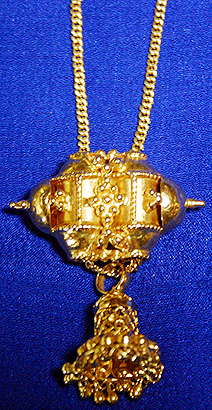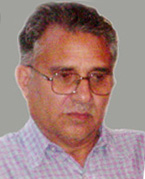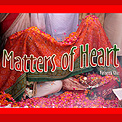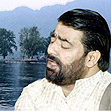CATEGORIES
|
DEJI HOR- A SYMBOL OF SUHAGIN
|
|
(Dedicated to the Motherhood of Kashmiri Pandit women)
*-Dr Chaman Lal Raina |
|
Dejihor
is a golden Abhushan/ornament designed as the symbol of being a
Suhagin/ Saubhagyawati. It is not the Mangla Sutra, but a representation
of being Dvija/twice- born according to the Laughakshi Paddati. In the
early Aryan civilization, every woman was supposed to be invested with
the sacred thread. Later Mangla Sutra took the place of the Bhrahma
Sutra-Upanayana in the rest of Bharat except Kashmir. Kashmir evolved a
new system, where the Dijahor took place of Upanayana at the time of
Devaguna Sanaskara /initiation before the actual Panigrihan Saptapadi/
marriage ceremony of the girl.
  Dejihor is of gold and should be of the gold. Gold represents the Hiranyagarbha or the cosmic womb. Dejihor is of gold and should be of the gold. Gold represents the Hiranyagarbha or the cosmic womb.Why?
Gold
is considered as the purest form of metal, which never gets stained.
Shri Sharika is said to be the Hiranyamayi Devi. Design of the jewelry
is also influenced by the religious ethos. Since Kashmir has remained a
Shakti Pitha and the Shaktivad has been the main source of our spiritual
insight and upbringing within the Sanatana Dharma, so it was natural
that Dejihor should have taken the symbol of the Shri Yantra. At the
Anushthhana/ invocation of Devguna, known as Kanya Sanaskar the Dejihor
is sanctified by the Vedic and the Tantrik Mantras related to the Shri
Yantra.
What is Shri Yantra?Shri Yantra is the Chakreshvara, the King of the all Yantras, according to the Shaiva -Shakti Agamas. The hymn related to the formation of the Shri Yantra is: “Bindu-Trikona-Vasukona Dashaarmyugma Manvashra-Naagadala-Samyutashodaaram Vrtta Trayam Cha Dharni Sadana Trayam Shri Chakram etad Uditam Para devataayaah”
1 Dot/ Bindu is Ananda --
All Bliss. 2 The inverted triangle is Sarva Siddhi Pradaa Shakti, the
Giver of all prosperity. 3 Eight Triangles are the Sarva Rogahara
Chakra-the Destroyer of all diseases. 4 Ten Triangles are the Sarva
Rakshaakara Chakra- the All Savior. 5 Next ten Triangles are the
Sarvartha Saadhaka Chakra-the Giver of the all fortune. 6 Fourteen
Triangles are the Sarva Saubhagya Daayaka Chakra- Giver of all types of
auspiciousness. 7 Eight Lotus Petals are the Sarva Sankshobhana Chakra,
the giver of the Eight perfections, by removing all the obstructions. 8
Sixteen Lotus Petals are the Sarva Pari Puraka Chakra, the Giver of all
accomplishments. 9 Square of three lines with four portals is the
Trailokya Mohan Chakra, which is all potent in making the triple world
in the command of the bride with purity and austerity.
The Nine Chakras are represent by the Shatkona, two holes and one Chuni.Mantras are powerful and produce the positive energy. Thus the Dejihor was designed by the great Kashmiri Acharyas to infuse the divine strength within the married woman. The designs are changing, but the Shatkona with circular dot at the extremities have remained the same. The size of the Dejihor has changed and is still changing.   This
Dejihor is the Section of the Chakreshvara, which we revere at the Hari
Parbhat. The two holes of the Dejihor represent the Jaya and Vijaya
Shaktis within the Shatkona Yantra.The Atahor is given by the in-laws to
represent the invocation and blessings from the Maha Lakshmi, when the
bride is received for the first time by the Wai’ryuw/ in-laws after the
marriage ceremony is over. At the Sata Raath the bride/ married woman
gets the Attahor from the Maalyun/ parental house, and the tradition
continues for the rest of her life. I think, it is more of affection,
reverence for the married daughter from her parents. The Atta is the
name of Shiva, and Attahor is Shiva Shakti Eka Roopini, the Oneness of
Shiva and Shakti. This
Dejihor is the Section of the Chakreshvara, which we revere at the Hari
Parbhat. The two holes of the Dejihor represent the Jaya and Vijaya
Shaktis within the Shatkona Yantra.The Atahor is given by the in-laws to
represent the invocation and blessings from the Maha Lakshmi, when the
bride is received for the first time by the Wai’ryuw/ in-laws after the
marriage ceremony is over. At the Sata Raath the bride/ married woman
gets the Attahor from the Maalyun/ parental house, and the tradition
continues for the rest of her life. I think, it is more of affection,
reverence for the married daughter from her parents. The Atta is the
name of Shiva, and Attahor is Shiva Shakti Eka Roopini, the Oneness of
Shiva and Shakti. The Shatkona is the Shiva and Shakti in Unison and is represented in the figure below: 
The
inverted triangle is revered as being the Primal Prakriti.The upward
triangle is termed as the Purusha The Bindu at the center of the
Shatkone is represented by a Chu’ni/ precious stone in Kashmiri
language.
It
represents the Priya Bindu of the Shri Raj Rajeshvari Shri Chakra. The
Mantra runs as: Shri- Chakra- Priya- Bindu-Tarpana- Para -Shri
Raja-Rajeshvari The central dot of the Shri Chakra is the transcendental
stage of the Shri Rajarajeshvari. Kashmiri Pandits bless the
Mahaaryen/bride to be the Raja Rajeshvari. She is said to be the Raaj’u
Reyen, after Mahaaryen.
 Dejihor Chhi meinya Pa'iz Asmitaa Baasaan Chuum Chhas Bu Garvita Dekya bajritch Nisha'ini Chhi A'ithi Andar Shatkonuk aakar Chhu Kotah Sondar Atahor Chhu Shiv Shakti Hund Aadhar Deji Haaruk Bajar Chhu Banun Nervikaar -------- Jaya Sibu
Glossary:
|

*Dr.
Chaman Lal Raina did Masters in Hindi & English. Ph.D. in Hindi
& Iqbaliat at the University of Kashmir. Worked on the research
project at the Iqbal Institute for writing monographs on Indology as
Research Associate. Worked as lecturer to teach research methodology in
Iqbal Institute, University of Kashmir. Dr. Raina's first love is for
the Vedas and the Shakti Tradition of India. To his credit goes some ten
books on Indology. He was awarded Nagmani Fellowship, Buddhist
Fellowship etc. from various Institutions. Presently Dr. Raina is
associated with the Yoga Studies, religion and sanskrit at Florida
International University, USA
VIPUL KOUL
|





No comments:
Post a Comment